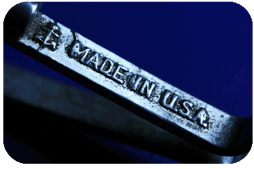 In the 1950s, more than 150 television manufacturers called the U.S. home. Today, not even component parts for TVs are produced on American soil. Still, that hasn’t stopped Wal-Mart from slapping “Assembled in the USA” stickers onto many flat screen TVs stocked in its stores. That’s because the company buys the televisions from South Carolina’s Element Electronics Corporation, which imports all their items from China.
In the 1950s, more than 150 television manufacturers called the U.S. home. Today, not even component parts for TVs are produced on American soil. Still, that hasn’t stopped Wal-Mart from slapping “Assembled in the USA” stickers onto many flat screen TVs stocked in its stores. That’s because the company buys the televisions from South Carolina’s Element Electronics Corporation, which imports all their items from China.
That doesn’t mean Element is simply a middleman operation though. TVs that arrive at the company’s Winnsboro plant are first placed on a conveyor belt to check for scratches and other defects. Further down the line, workers install motherboards and perform several mechanical tests. When Element’s work is done, the TVs are repackaged, stamped, and sent off to Wal-Mart stores. The mega-retailer’s relationships with companies like Element lie at the heart of its commitment to produce $250 billion worth of goods domestically over the next decade. But as the South Carolina manufacturer shows, revitalizing an entire industry can’t be done overnight. After all, even the motherboards installed by Element employees are originally made in China.
That’s because the U.S. lacks a blue-collar workforce who can perform complicated electrical work, something that China has in abundance. However, companies like Element and Wal-Mart hope to reverse this trend by gradually reintroducing elements of production back to America. For instance, Element expects to receive even more assembly work once the company has established itself better with Chinese suppliers. In fact, within two years Element’s factory will have the equipment to install glass panels onto flat screen TVs. These parts account for 65 percent of the television’s cost, so Element will need to prove that it can “backlight” TVs effectively before earning the trust of outside manufacturers. Meanwhile, Wal-Mart is working to bring more assembly and production tasks to American factories with extra capacity. For manufacturers, the retailer’s commitment to buy what they produce is incentive enough to invest in larger capabilities, such as Element’s backlighting expansion.
Questions:
- Is putting “Assembled in the USA” ethical if products are mainly produced elsewhere?
- Can the U.S. increase the number of qualified production workers?
Source: Timothy Appel, “The Hard Business of Restarting U.S. Factories,” The Wall Street Journal, July 17, 2014. Photo by The Automotovated Cyclist.
